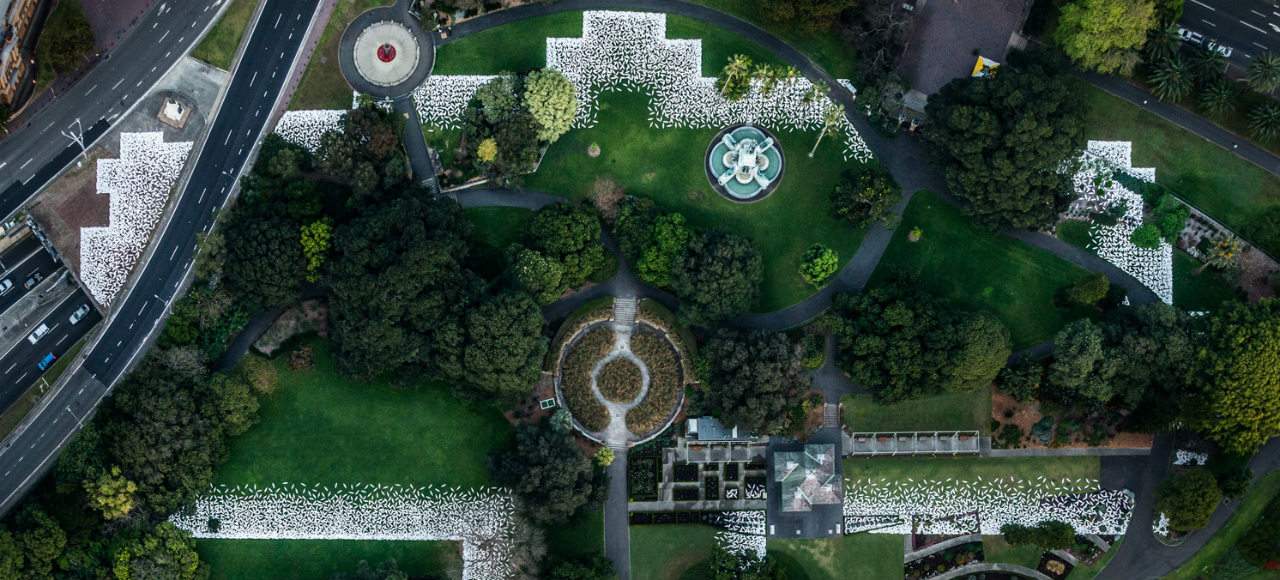A Huge Shell Palace Installation Has Popped Up in Sydney's Botanic Garden
The first Kaldor Public Art Project to be created by an Indigenous artist, Jonathan Jones.
15,000 white shells and 20,000 square metres of the beautiful, springtime setting of the Royal Botanic Gardens form the basis of this year's Kaldor Public Art Project. Its 32nd incarnation and the first to be created by an Indigenous artist, the piece is an installation by Wiradjuri/Kamilaroi artist Jonathan Jones, interpreting the footprint of the Garden Palace. Constructed in 1879, the building was destroyed by a fire three years later, taking with it thousands of Indigenous objects, which had been collected by colonisers.
Titled barrangal dyara (skin and bones), the work is a whopping 250 metres by 150 metres. For Jones, it is a "response to the immense loss felt throughout Australia due to the destruction of these culturally significant items" and "represents an effort to commence a healing process and a celebration of the world's oldest living culture despite this traumatic event."
At the installation's centre sits a meadow of native kangaroo grass, contrasting with the Royal Botanic Garden's European-inspired formality. As you wander through, you will hear soundscapes in eight Indigenous languages, which were put together in collaboration with southeastern communities. Keep an eye and ear out for presentations of Indigenous language, performances, talks, special events and workshops, which are happening daily.
barrangal dyara (skin and bones) opens to the public on Saturday, September 17 for 17 days, closing on October 3, 2016. Entry is free and you can visit anytime during the Garden's opening hours, which are currently 9am and 5.30pm.






